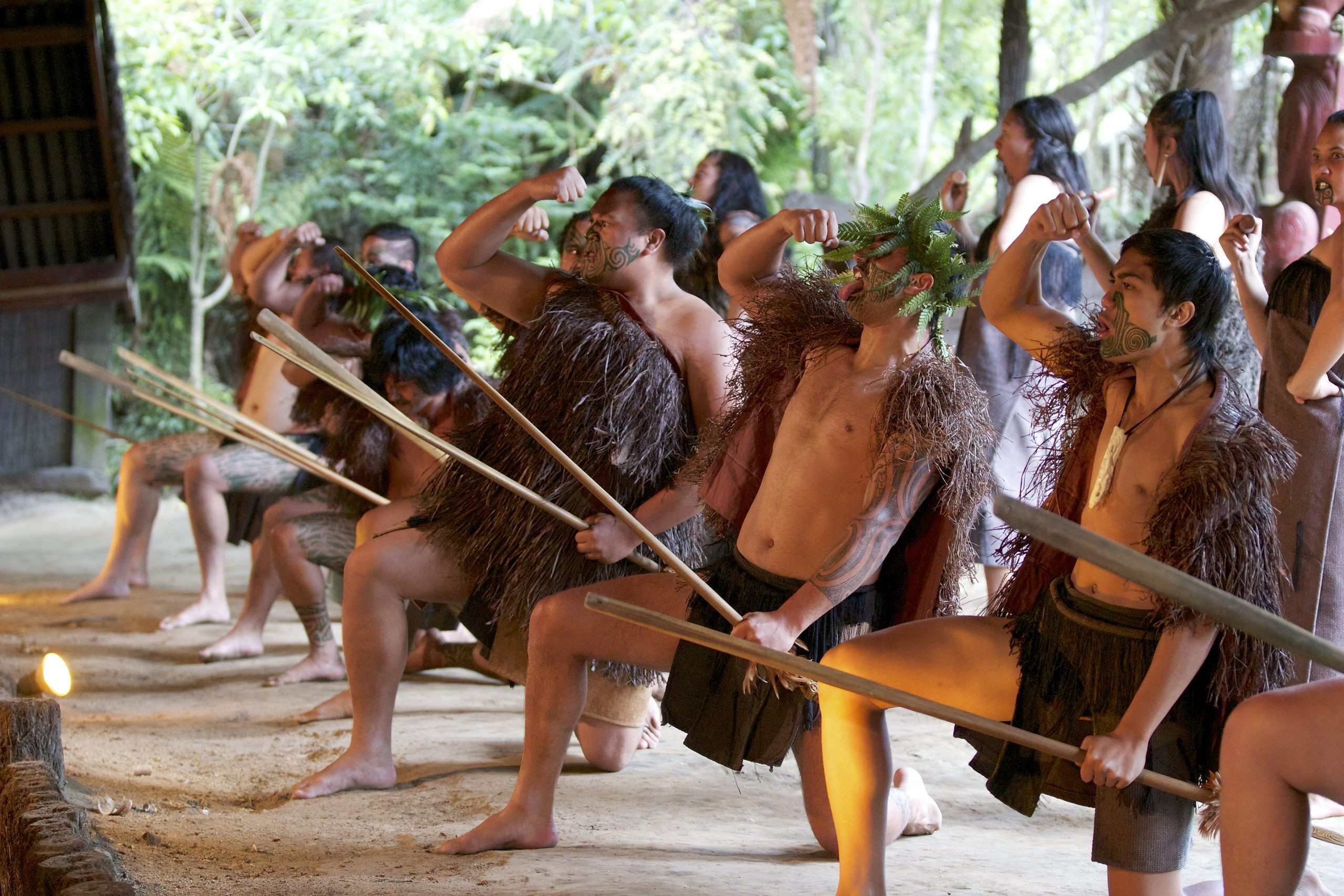The haka. For many around the globe, this powerful performance is synonymous with New Zealand, particularly when witnessed before a rugby match featuring the All Blacks. But beyond the sporting arena, the haka holds a depth of meaning rooted in the rich cultural heritage of the Māori, the indigenous people of New Zealand. Understanding the Haka Dance Meaning reveals a story far more complex and significant than a simple war cry. It’s a vibrant expression of history, identity, and spirit.
From Battlefield to Community Hall: Tracing the Haka’s Origins
Initially, the haka emerged as a formidable war dance, a peruperu haka, performed by Māori warriors before battle. This ancestral war cry served a dual purpose on the battlefield. Firstly, it was a calculated act of psychological warfare, designed to intimidate opponents. Warriors employed aggressive facial expressions – wide eyes, protruding tongues – coupled with guttural cries and the rhythmic brandishing of weapons. This intimidating display was intended to instill fear and disarray in the enemy ranks before combat even commenced. Secondly, the haka was a powerful tool for bolstering the morale of the warriors themselves. They believed the performance invoked the aid of the god of war, imbuing them with courage and strength for the impending conflict. These early hakas were highly choreographed, demanding precise movements and timing, fostering unity and a collective spirit amongst the warriors.
The Evolving Significance: Haka as a Symbol of Unity and Strength
As time progressed, the haka transcended its purely martial origins, evolving to encompass a broader spectrum of meanings and purposes within Māori society. The ngeri haka emerged as a form focused less on warfare and more on communal expression. Unlike the peruperu, the ngeri typically omits weapons and prioritizes moving performers and audiences emotionally and spiritually, rather than through fear. This shift in purpose is reflected in the performance style. Ngeri hakas often feature more fluid and expressive movements, allowing individual participants greater freedom in their interpretation and delivery. Importantly, haka is not solely a male domain; specific haka compositions have been created for women, highlighting their integral role in Māori culture and performance.
In contemporary New Zealand, the haka is a versatile cultural practice performed across various settings. On a national level, it is a prominent feature at significant events, most notably the iconic pre-match haka of the All Blacks rugby team. However, its significance extends far beyond national displays. Haka is deeply woven into the fabric of everyday life, performed at weddings, funerals, community gatherings, and as a gesture of respect and welcome towards esteemed guests. While deeply rooted in Māori tradition, the haka is not exclusive to Māori people. It can be performed by anyone who approaches it with the necessary respect, seriousness, and a genuine understanding of its meaning and cultural weight. Indeed, many visitors to New Zealand are offered the opportunity to learn and participate in a haka, fostering cross-cultural understanding and appreciation.
“Ka Mate”: A Haka of Triumph and Resilience
Among the vast repertoire of haka, “Ka Mate” stands out as perhaps the most globally recognized, largely due to its consistent performance by the All Blacks. This ceremonial haka, composed by the Rangatira (chief) Te Rauparaha, is a powerful narrative of life’s triumph over adversity. Te Rauparaha penned “Ka Mate” following a perilous escape from enemies of the Ngāti Maniapoto and Waikato tribes. Seeking refuge in a dark food storage pit, he emerged to be greeted by light and the protection of a friendly chief. The haka’s famous opening lines, “Ka mate, ka mate! ka ora! ka ora!” translate to “I might die! I might die! I may live! I may live!” The concluding lines, “Ā, upane, ka upane, whiti te ra! Hi!” convey “A step upward, another… the Sun shines! Rise!” encapsulating the journey from darkness to light, from despair to hope.
[  Māori performing Haka in Rotorua, New Zealand, showcasing cultural tradition and powerful movements. ]
Māori performing Haka in Rotorua, New Zealand, showcasing cultural tradition and powerful movements. ]
The haka’s deep connection to New Zealand culture is undeniable. For companies like Haka Tours, the name itself reflects a commitment to embodying the spirit of the haka – fostering connections between visitors (manuhiri), the land, and Māori culture through enriching travel experiences. Whether through adventure tours or culturally focused sightseeing, Māori cultural elements are often integrated, aiming to provide a deeper understanding and appreciation of this unique heritage.
In conclusion, the haka dance meaning extends far beyond a simple war cry. It is a multifaceted cultural treasure, encompassing origins in warfare, evolving into a powerful expression of community, unity, respect, and resilience. From the intimidating peruperu to the expressive ngeri and the iconic “Ka Mate,” the haka remains a vibrant and enduring testament to Māori culture and its profound significance in New Zealand and on the world stage.
